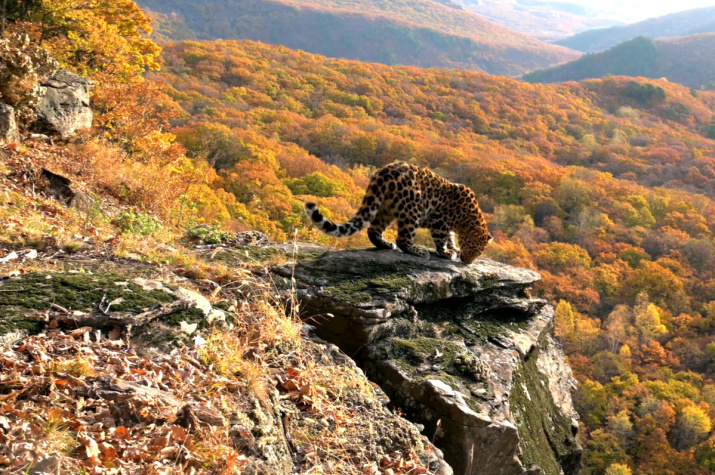A previously unknown adult Amur leopard was captured by a camera trap in Primorsky Krai. Valuable shots allowed the staff of Land of the Leopard National Park to identify the predator and create a "passport" for it.
Studying materials from the camera installed by wildlife photographer Sergei Gorshkov, scientists realized that the pattern of spots on the hide did not match any other specimen in the database of the Russian population of the world's rarest big cat. The newcomer, a young female, was assigned the personal number Leo 207F. She is currently over two years old.
The female went out onto a spacious platform with a breathtaking view of the autumn forest. She’s exploring the area and sniffing. It looks like Leo 207F is open to new acquaintances and ready to have kittens.
“According to our studies of leopard reproductive biology, the first mating in females occurs at an average age of two years and three months. The data source is photographs from automatic cameras of females with litter. We determine the age of kittens visually by comparing them with the existing photo database of leopards from zoos. We track the history of each litter, we record all registrations, the age of the kittens, and this way we calculate the estimated conception date," said Anna Vitkalova, an employee at the Science Department of Land of the Leopard.
The video was made in the northern part of the national park, which is territorially included in Ussuriysk Urban District. The more frequent appearance of spotted cats here may indicate the expansion of the range of leopards, whose numbers are steadily growing. Rare predators disperse and gradually occupy lands outside specially protected natural areas. This indicates the need to expand the national park.
Leo 207F was discovered quite recently and does not yet have a name, but an animal with such a successful "portfolio" can count on the imminent appearance of its own Keeper, who will name it. Leopard keepers become a kind of "godparents" of spotted predators and follow the fate of their wards. The title is awarded to both individuals and organizations for contributions to the work of reviving the leopard population.
The Amur leopard is the world's rarest big cat. According to the latest data, 110 of these graceful predators live in Russia. This is not enough for the complete restoration of the population, but progress is obvious. We would like to remind you that at the beginning of the 21st century, only about 35 Amur leopards remained in the wild.

